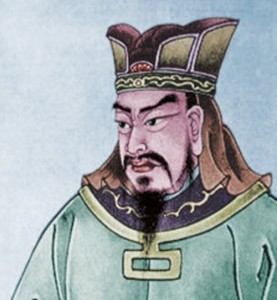The Art of War is a modern bestseller based on an ancient Chinese military treatise attributed to Sun Tzu a high ranking military general. It is believed that Sun Tzu lived –and compiled his theories-during what is know as “Warring States” period, roughly between 476 and 221 BC. It is generally regarded as one of the definitive works on military strategy and tactics. The Art of War has had an influence on Eastern and Western military thinking, and more recently on business tactics, legal strategy, and now ski instruction….
Sun Tzu suggests five critical factors that are to be assessed before undertaking any military action and the relevance to a ski lesson is striking, they are: 1. The Way 2. The Weather 3. The Terrain 4. Leadership 5. Discipline. Each of the five factors is also critical in the development of a great ski lesson.When considering The Way Tzu is referring to civilian leadership and “inducing people to have the same aim as the leadership.” Much the same way that an instructor must asses and adjust a lesson based on the student’s goals, with both playing an active role to ensure that expectations are understood and achievable, they then form the basis of the lesson plan.
The Weather is an obvious one for ski instructors as so much of what we do is influenced by weather, as The Art of War explains “The essential point here is to avoid disruption of the productive activities of the people…” In order for us to help our students be successful we always adapt our lesson to the forces of nature, if it’s freezing cold less talk and more action is the order of the day, and on a sunny powder day students are usually able to challenge more difficult terrain than they might be comfortable on.
Amazingly for a military guide written over 2,000 years ago the advice offered is totally relevant for a modern ski lesson; when considering The Terrain Tzu suggests that “The terrain is to be sized up in terms of distance degree of difficulty of travel dimensions and safety.” As any seasoned ski pro will tell you most mistakes in a lesson lead back to terrain selection, and the adage of minimum terrain maximum speed should be followed in (almost) every instance. There is no better way to earn the trust- and praise- of students than to take them to terrain that strikes the right balance between challenge, safety, achievement and fun.
Discipline in the context of the Art of War refers to organization, efficiency and coherence. There is a lot to organize in a ski lesson; yourself (your attitude, understanding, and equipment) the interests, expectations and safety of students, and managing them all in a defined timeline. A well organized lesson requires plenty of skill but is largely unnoticed by students, but a poorly organized lesson will be unmistakeable. Equally important is coherent communication and recognizing that whatever your communications style you should be direct, succinct and specific when speaking with your students.
Traditional virtues make up the criteria for the assessment of The Leadership, they include: Intelligence trustworthiness humanness courage and sternness. These are all common attributes of successful ski instructors as well, anyone that has taught kids will attest to the need for sternness, which must be matched with a sensitive human touch, you have to have the courage to stand up in front of a group and share your expertise, if you are not trustworthy who will -literally- follow as you lead them down the mountain. Intelligence of course is implied when you are the kind of person that makes money doing what they love. Sun Tzu’s criteria also embody the leadership skills required to be a ski pro.
The Art of War by definition applies to competition and conflict, but when viewed through a slightly wider lens it offers as many insights into achievement and the interpersonal skills required to be successful in the modern world. Today’s ski instructor has little in common with Chinese warriors 2,500 years ago but these simple principles laid out for success on the battle field are just as relevant for an instructor’s success on the mountain.



